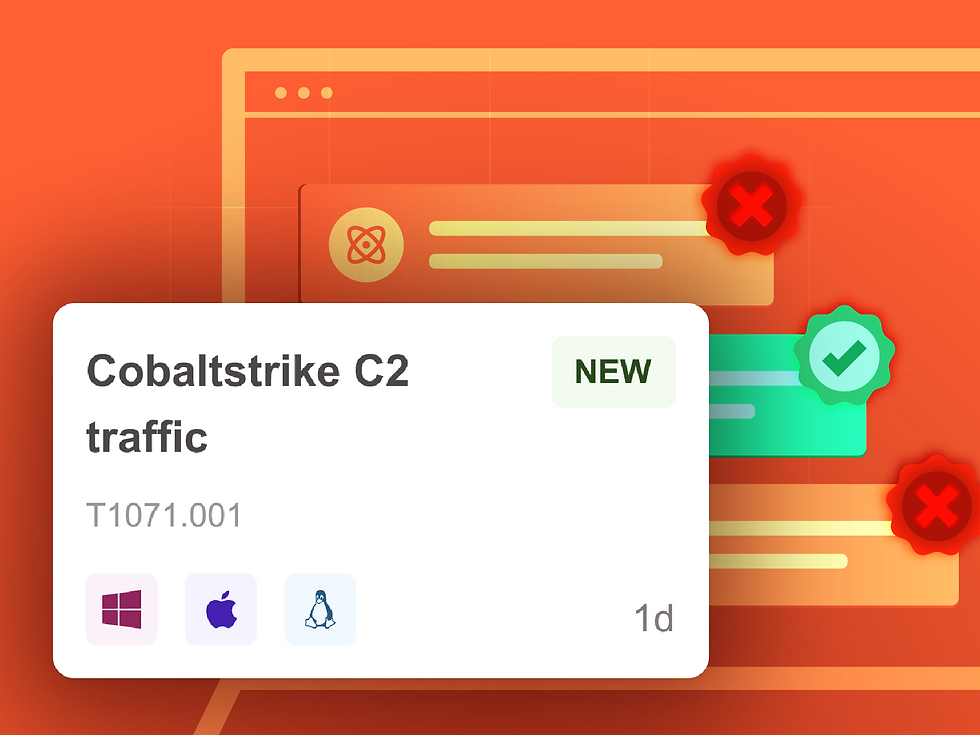Which Cyber Defenses Actually Work in 2025
- Babette De Decker
- Feb 26
- 4 min read
Updated: Mar 26
Many companies mistakenly interpret the absence of cybersecurity incidents as evidence that their defenses are robust. However, this assumption can be dangerously misleading. An absence of breaches might simply reflect good fortune, timing, or being overlooked by attackers rather than effective security measures. Real cybersecurity assurance requires proactive validation, continuous testing, and comprehensive forensic readiness.
Understanding Adversary Profiles
Cyber attackers differ significantly in their methods and motivations. Understanding their profiles is essential for tailoring an effective defense strategy:
Opportunistic Attackers (Shotgun Approach)
Opportunistic attackers, commonly financially motivated, broadly scan and target organizations with vulnerabilities that can be easily exploited. Examples include widespread ransomware attacks like WannaCry or NotPetya, which exploited well-known, unpatched vulnerabilities.
Targeted Attackers
Targeted attackers invest considerable time, resources, and efforts into researching their victims. They meticulously analyze targeted companies over extended periods, studying infrastructure, employee habits, business processes, and third-party relationships. The SolarWinds attack illustrates how adversaries patiently prepared sophisticated malware tailored specifically to evade detection and achieve long-term persistence.
Companies targeted in this manner must recognize their adversaries' significant resources, determination, and adaptability. Defending against targeted threats requires continuous, substantial effort, as attackers will adapt their methods rapidly. Organizations must regularly update defenses, consistently evaluate threat intelligence from comparable breaches, and conduct continuous threat modeling exercises. Keeping defenses consistently updated is key, as attackers continually refine their tactics and exploit new vulnerabilities.
Continuous validation through simulation helps maintain defensive readiness.
Insider Threats
Insider threats originate from individuals with legitimate internal access who misuse privileges maliciously or inadvertently. Notably, Edward Snowden used authorized access to leak sensitive information, highlighting insider threats' potential damage and difficulty of detection.
Practical Case Studies: How Breach and Attack Simulation (BAS) Helps
So what can you do about it? Here are some examples of how others successfully approached it:
Case Study 1: Strengthening Baseline Controls Against Opportunistic Attacks
A medium-sized healthcare provider utilized BAS to validate defenses after observing large-scale ransomware attacks targeting other healthcare institutions. Based on the data that was published in the media and by technical experts they simulated MITRE ATT&CK techniques relevant for the attacks, such as T1486 – Data Encrypted for Impact, used by WannaCry ransomware. These simulations revealed that detection techniques for suspicious file activities had not yet been properly set up, prompting immediate improvements to their security posture.
Case Study 2: Proactive Defense Against Targeted Attacks
A global manufacturing firm recognized increasing targeted threats in its industry and proactively utilized BAS to simulate advanced post-compromise scenarios. They specifically tested attacker techniques including automated data exfiltration (T1020), exfiltration over command-and-control channels (T1041), and lateral movement via remote services (T1021). These realistic simulations uncovered weaknesses in data loss prevention (DLP), asset segmentation, and internal monitoring, driving immediate and significant improvements in their security capabilities.A global manufacturing firm recognized increasing targeted threats in its industry and proactively utilized BAS to simulate advanced post-compromise scenarios. They specifically tested attacker techniques including:
These realistic simulations uncovered weaknesses in data loss prevention (DLP), asset segmentation, and internal monitoring, driving immediate and significant improvements in their security capabilities.
Case Study 3: Validating Controls Against Insider Threats
An international technology company recognized the complexity of insider threats. Using BAS, they simulated insider scenarios, including unauthorized access to critical resources (MITRE ATT&CK T1530 – Data from Cloud Storage), intentional data exfiltration (T1048 – Exfiltration Over Alternative Protocol), and misuse of administrative privileges (T1078 – Valid Accounts).
This approach highlighted shortcomings in their internal monitoring and enforcement of least privilege principles, leading to significant enhancements in behavior analytics and internal threat detection.
Elevating Your Baseline Defense
Organizations can significantly reduce exposure to opportunistic attacks through foundational cybersecurity practices:
Regular patching
Multi-factor authentication (MFA)
Network segmentation
Continuous employee training
Validating these foundational controls regularly through simulations ensures ongoing effectiveness.
Strategic and Continuous Preparedness Against Targeted Attacks
Defending against sophisticated attackers requires persistent strategic effort:
Regularly analyzing industry-specific threat intelligence
Continuously testing defenses against realistic simulations of actual adversary techniques (e.g., MITRE ATT&CK framework)
Fine-tuning security controls based on practical threat analyses
Companies must match their adversaries' patience and adaptability through continuous monitoring, adjustment, and verification of defenses.
Ensuring Forensic Readiness
Effective forensic readiness involves proactively simulating actual cybersecurity incidents. Regular, realistic incident simulations train incident response and forensic teams in the actual environments that matter, significantly improving response times and minimizing damage when real incidents occur.
A good way to be ready for an actual incident is to generate the events and IOCs in a controlled simulation that would also turn up during a real attack.
Addressing Insider Threats Through Vigilance
Managing insider threats effectively requires:
Deploying robust internal monitoring and behavioral analytics
Strictly enforcing least privilege principles (NIST guidance)
Regularly simulating insider threat scenarios to ensure effective detection capabilities
Continuous validation of internal controls improves the timely detection and mitigation of insider threats.
Summary: Transforming Your Cybersecurity Approach
True cybersecurity assurance requires continuous validation, proactive simulations, and forensic readiness. BAS platforms enable realistic emulation of actual attack scenarios, ensuring that your organization's defenses remain consistently effective against opportunistic, targeted, and insider threats. By proactively validating defenses, organizations ensure genuine security—not merely the illusion of it.

